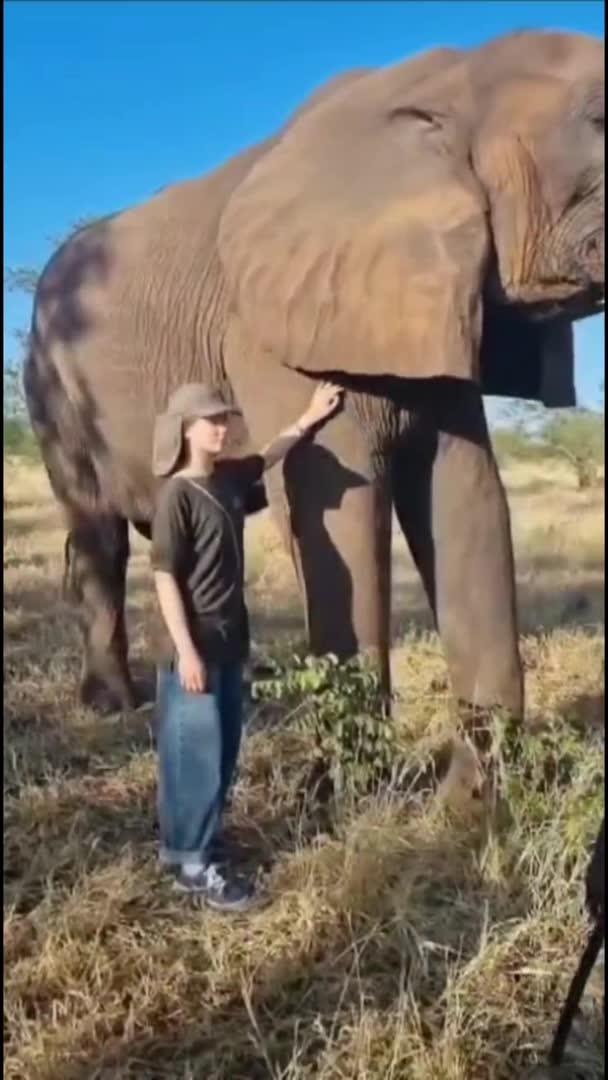
African Game Animals list: A Concise Field Guide Africa boasts incredible biodiversity, and a significant part of its appeal lies in its diverse game animals. This list provides a quick overview of some of the most sought-after species, focusing on key identifying features. Big Game African Elephant ( Loxodonta africana): Unmistakable. The largest land animal. Look for: Massive size, large ears shaped like the African continent, prominent tusks (present in both males and females, though females' are generally smaller). African Lion (Panthera leo): A large carnivore, apex predator. Males are readily identified by their prominent manes, which vary in color and thickness depending on age, genetics, and environment. Females lack manes. Leopard (Panthera pardus): A stealthy and adaptable big cat. Look for: Rosette-patterned coat (dark spots arranged in a circle), relatively short legs compared to body length, preference for forested and rocky habitats. Rhinoceros (Black Diceros bicornis & White Ceratotherium simum): The distinction between black and white rhinos refers to the shape of their mouth, not the color of their skin. Black Rhino: Pointed, prehensile upper lip used for browsing. More aggressive and solitary. White Rhino: Square, flat lip adapted for grazing. More social and often found in groups. African Buffalo (Syncerus caffer): A large, powerful bovine. Look for: Massive horns that fuse at the base in mature bulls to form a "boss" across the forehead. Known for their unpredictable temperament. Plains Game (Antelopes & Other Ungulates) Kudu (Greater Tragelaphus strepsiceros & Lesser Tragelaphus imberbis): Elegant antelopes with long, spiraling horns (males only). Greater Kudu: Larger, with more pronounced horns and typically found in southern and eastern Africa. Lesser Kudu: Smaller, with shorter horns and primarily found in East Africa. Impala (Aepyceros melampus): Graceful, medium-sized antelope. Look for: Reddish-brown coat, white underbelly, black stripes down the rump, and lyre-shaped horns (males only). Known for their leaping ability. Wildebeest (Blue Connochaetes taurinus & Black Connochaetes gnou): Also known as gnu. Distinctive, ungainly appearance. Blue Wildebeest: Grayish-blue coat, dark vertical stripes on the front quarters, and a long, flowing mane. Black Wildebeest: Dark brown to black coat, white tail, and a distinctive forward-curving set of horns. Zebra (Plains Equus quagga, Mountain Equus zebra, Grévy's Equus grevyi): Striped equids. Each species has unique stripe patterns. Plains Zebra: Most common, with variable stripe patterns that extend to the belly. Mountain Zebra: Distinctive dewlap (fold of skin under the throat), narrower stripes, and white underbelly. Grévy's Zebra: Largest zebra species, with narrow, closely spaced stripes and large, rounded ears. Eland (Common Taurotragus oryx & Giant Taurotragus derbianus): The largest antelope species. Common Eland: Tawny brown color, spiral horns (present in both sexes), and a distinctive dewlap on the throat. Giant Eland: Larger than the common eland, with more pronounced spiral horns and bolder striping on the flanks. Oryx (Gemsbok Oryx gazella, East African Oryx beisa, Scimitar Horned Oryx dammah): Striking antelopes with long, straight horns. Gemsbok: Black and white facial markings, long, straight horns, and a gray coat. East African Oryx: Similar to the gemsbok, but with less black on the flanks. Scimitar Horned Oryx: Distinct curved horns (nearly extinct in the wild). Waterbuck (Kobus ellipsiprymnus): Large, robust antelope found near water sources. Look for: Shaggy brown coat, white circle around the rump (the "toilet seat"), and long, curved horns (males only). Springbok (Antidorcas marsupialis): Medium-sized antelope known for its pronking display (leaping high into the air with its legs stiff). Look for: White face, dark reddish-brown stripe down the flanks, and a white flap of skin on the back that opens when pronking. Hartebeest (Red Alcelaphus caama, Lelwel Alcelaphus lelwel, Coke's Alcelaphus cokei): Large, ungainly antelopes with sloping backs and oddly shaped horns. Various species are distinguished by horn shape and coat coloration. Other Notable Species Giraffe (Giraffa camelopardalis): The tallest land animal. Unmistakable due to their long necks and distinctive patterned coats. Hippopotamus (Hippopotamus amphibius): A large, semi-aquatic mammal. Look for: Barrel-shaped body, short legs, and a massive head. This list is not exhaustive, but it covers many of the iconic and commonly encountered game animals of Africa. Remember to consult detailed field guides and experienced guides for accurate identification in the field. https://m.uh.app/news/navigating-trophy-hunting-in-africa-species-regulations-and_w3pdcO3YEe-tm0W5Zik9PQ
Post: 18 February 21:46
















































